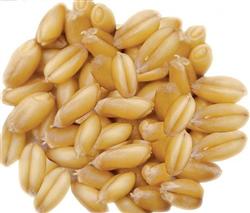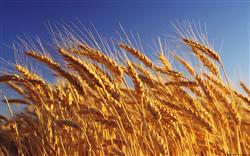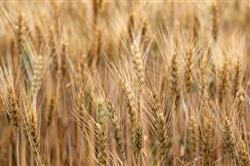How do you store wheat?

How is wheat stored? What pests to prevent? Because wheat storage has the following factors: strong hygroscopicity: thin wheat seed coat, loose tissue structure, strong hygroscopicity. Long post-ripening period: wheat post-ripening period is longer. Different varieties, the length of the ripening period is also different. The post-ripening period of most varieties varies from two weeks to two months. The wheat with proper moisture content has improved quality and storage stability after finishing post-ripening. High temperature resistance: wheat has strong heat resistance. According to the test, when the moisture content of wheat is 17%, the drying temperature does not exceed 46℃; or when the moisture content is below 13%, the insolation temperature does not exceed 54℃, the enzyme activity does not decrease, and the germination ability is still maintained. The technical quality of ground wheat flour not only does not decrease, but also improves, making steamed bread soft and swollen. This provides a basis for wheat drying or high temperature pest control. Storage tolerance: wheat has the greatest point is to have a good storage tolerance. Wheat that ripens after completion and breathes weakly, lower than other cereals. Normal wheat, moisture within the standard (12.5%), stored at normal temperature for 3-5 years or low temperature (15℃) for 5-8 years, its edible quality has no obvious change. Susceptible to insect pests: wheat is a grain species with poor insect resistance and high insect infection rate. Except for a few leguminous insects, wheat can be infected by almost all stored grain pests, among which corn weevil and wheat moth are the most serious. The ripening, harvesting and storage of wheat are in summer, which is the breeding and occurrence stage of pests. The temperature after storage is high. If it rains, it will cause very suitable occurrence conditions for pests. Therefore, storage of wheat can refer to the following points: strict control of moisture: due to the strong moisture absorption ability of wheat, wheat storage should pay attention to precipitation and moisture. The summer high temperature conditions after wheat harvest should be fully utilized for insolation, so that the moisture content of wheat should be controlled below 12.5%, and then stored. After wheat storage, moisture-proof measures should be taken, and attention should be paid to the phenomenon of water stratification and upper "top" during the ripening period. Hot storage: wheat hot storage closed storage, is the traditional method of wheat storage in China. The moisture content of wheat can be reduced by solarization, and the effect of high temperature insecticide and bacteria preparation can be obtained in the process of solarization and storage sealing. For newly harvested wheat can promote the completion of afterripening. Due to the extinction of pests, wheat moisture content and bacteria content reduced, respiratory intensity greatly weakened, can make wheat long-term safe storage. The concrete operation method of putting wheat into the warehouse while it is hot is as follows: in the middle of summer, choose sunny and high temperature weather, sun the wheat temperature to about 50℃, keep the high temperature for 2 hours, reduce the moisture content to 12.5% or less, gather around 3 pm, put it into the warehouse while it is hot, seal the whole warehouse, keep the grain temperature at about 46℃ for about 10 days, and kill all pests. After that, the grain temperature gradually decreased and balanced with the warehouse temperature, and then transferred to normal closed storage. In addition, the warehouse, equipment, appliances, etc. used for hot storage must be disinfected in advance. Low temperature closed storage: Although wheat can withstand high temperatures, it will also reduce wheat quality if it is stored for a long time at high temperatures. Therefore, wheat can be naturally ventilated or mechanically ventilated to fully dissipate heat after autumn cool, and sealed before spring warm to maintain low temperature. Low temperature storage is the basic method for long-term safe storage of wheat. Keeping wheat at a certain low temperature has certain benefits for prolonging seed life and maintaining quality. Wheat can also be frozen under conditions to maintain good quality, such as dry wheat stored at a low temperature of-5℃, which is conducive to the enhancement of vitality. Therefore, using the cold and low temperature in winter, turning over, removing impurities, freezing, lowering the temperature of wheat to about 0℃, and then sealing it while cold, it has a good effect on eliminating overwintering pests in wheat piles. Low temperature sealed can be stored for a long time, but to prevent contact with hot and humid air, so as not to cause dew on the surface of the wheat pile. Click for more wheat growing technology Click for more grain growing technology
- Prev

When is the right time to harvest wheat?
When is the right time to harvest wheat? What method can determine the harvest time? The yield of wheat harvest is the highest and the best in the middle and late stage of wax ripening. The middle and last stage of wheat wax ripening can be determined by the following methods: first, observe the grain. The seeds are generally orange in different shades, and can be seen horizontally after being cut with a knife.
- Next

How to determine the best harvest time of wheat?
How to determine the best harvest time of wheat? In what way can we determine that wheat is ripe for harvest? The best time for wheat harvest is the end of wax ripening, when the 1000-grain weight and yield of wheat are the highest. Harvesting too early or too late will lead to the decrease of 1000-grain weight and yield. At present, most of the wheat is harvested in the full ripening period.
Related
- The first cup of black tea in spring, the flavor and history of tea gardens in Kenya, Africa
- The computer can not only choose potatoes, but also grow tea rice. AI will grow winter oolong tea champion.
- It is not only the inflated tea bitten by insects, but also engraved with the four seasons tea in Beipu.
- The Oriental Beauty Tea Festival in Zhuxian County takes the stage at the weekend to experience the plus-size feast of oil tea.
- & quot; Oriental Beauty Tea & Exploration of Emei in Hsinchu, the hometown of quot;
- The new variety of strawberry "Tainong 1" dessert is the first choice with mellow aroma. Crimson gorgeous
- History of Tea in Taiwan: from Wild Inner Mountain to Export Tea Garden
- Two types of Taiwan Oriental Beauty Black Tea won the British three-Star Award for Childhood Tea Xiang Zhang Jiaqi changed from pilot to champion tea maker.
- Banana species and varieties: the planting history of Taiwan Xianren banana and dwarf banana is long, is banana disease resistant?
- Coffee planting Technology: Qianjie Coffee from Seedling to harvesting

